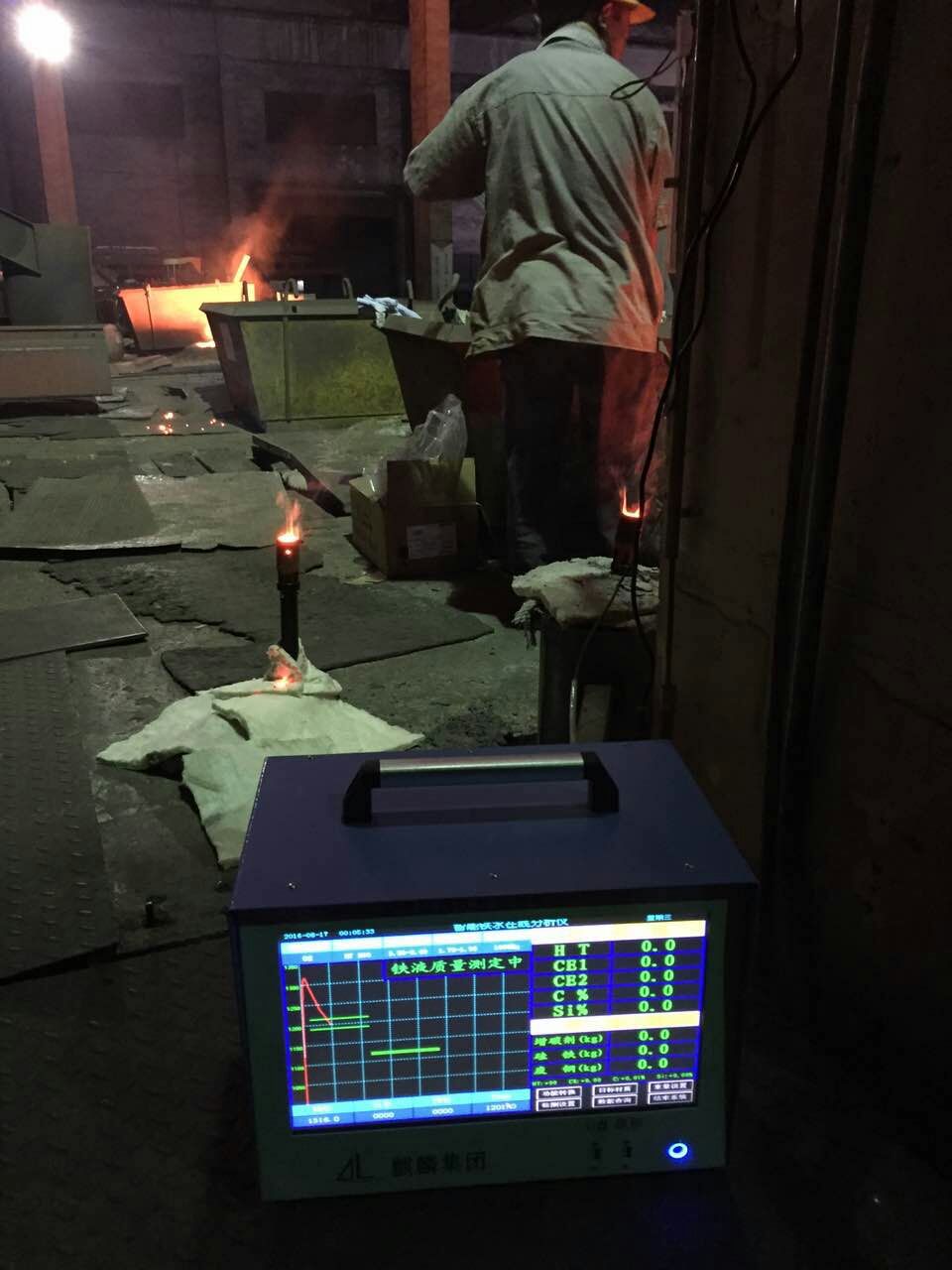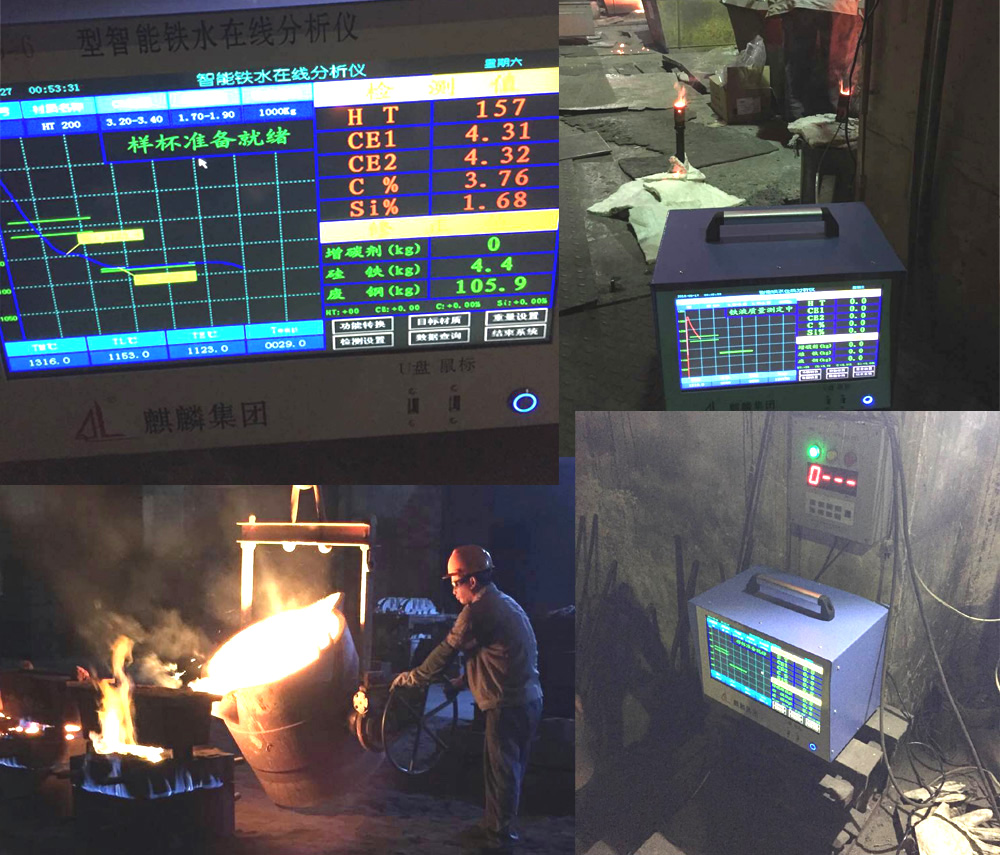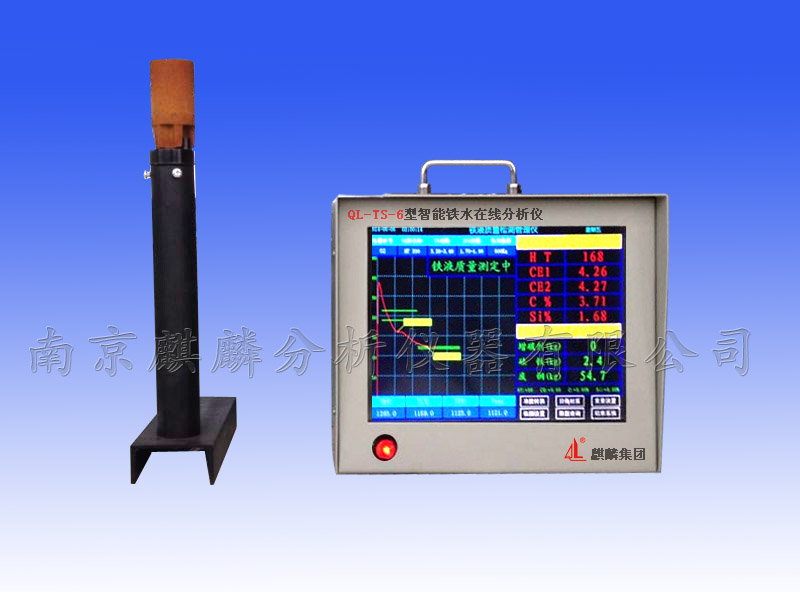In front of the furnace carbon silicon analyzer, also known as fast hot metal analyzer, carbon and silicon composition analyzer, carbon silicon equivalent instrument, thermal analyzer. In the production of cast iron parts, the appropriate chemical composition is selected according to the thickness of the casting and the casting conditions to ensure that the desired mechanical properties are achieved. When other conditions are the same, the carbon equivalent (C Si/3) has a decisive influence on the metallographic structure, casting properties and mechanical properties of cast iron.

Furnace carbon silicon analyzer customer test site
Carbon is one of the important elements in determining steel product specifications and quality. As the carbon content increases, the hardness and strength of the steel increase, and the toughness and plasticity decrease. On the contrary, when the carbon content decreases, the hardness and strength decrease, and the toughness and plasticity decrease. increase. Therefore, the analysis of carbon content in steel is of great significance and cannot be ignored.

Furnace carbon silicon analyzer customer test site
Silicon is brought into the steel smelting production process by raw materials (iron ore, scrap steel, deoxidizer, etc.), and silicon dissolves in α-Fe to form a solid solution, increasing the strength and hardness of the steel. Therefore, silicon is a beneficial element in steel and the content of silicon in steel is < 0.5%. However, in a hot-dip galvanizing plant that generally has a continuous annealing line with no oxidation furnace (NOF), the low-carbon steel (cold-rolled steel) used has a silicon composition of 0.03% max, which should not exceed 0.04% as much as possible. After the strip enters a zinc bath at about 460°C, it is impossible to obtain a good zinc state.

What are the main features of carbon silicon analyzer?
QL-TS-6 intelligent hot metal carbon-silicon analyzer can not only quickly determine the content of conventional carbon silicon, but also can test strength, hardness, elongation rate, etc., compared with the traditional laboratory analysis methods, and effectively improve the work efficiency. And reduce the testing cost and time.
1. The built-in casting function database is suitable for the control of the front furnace elements of cast iron and ductile iron production. It can quickly determine the carbon and silicon content and carbon equivalent, and adjust the ingredients in time according to the determination results. Greatly improved the yield, reduced the time of molten iron in the furnace, ease the workload of the furnace workers.
2, conventional detection equipment from the molten iron to test the strength of the test rod, hardness and other data to about 12 hours, and intelligent analyzer built-in database can be measured directly from the molten iron tensile strength and hardness values. Normally, the tensile analyzer, hardness tester, silicon carbide tester, thermometer, lathe, and planer are combined to obtain the results of a single smart analyzer.
3. Measurable gray iron, ferrite, ductile iron, original iron in rheid iron: carbon equivalent CEL, carbon content C%, silicon content Si%, pouring temperature TM, liquidus temperature TL, solidus temperature TS. You can directly find the grade of the produced castings and the content range of each element. It is easy to check.
......
Nanjing Kirin Scientific Instrument Group Co., Ltd.
office
September 1, 2016
Slewing Mechanism and Spare Parts
A slewing mechanism is an essential component of a Tower Crane that allows it to rotate horizontally. It enables the crane to reach different areas of a construction site without having to move the entire structure.
The slewing mechanism typically consists of the following components:
1. Slewing Ring: The slewing ring is a large circular bearing that supports the entire weight of the crane and allows it to rotate. It is usually located at the base of the crane and is designed to withstand heavy loads and provide smooth rotation.
2. Slewing Motor: The slewing motor is responsible for providing the necessary power to rotate the crane. It is connected to the slewing ring and is controlled by the crane operator.
3. Gear Mechanism: The gear mechanism consists of a set of gears that transmit the power from the slewing motor to the slewing ring. It ensures smooth and controlled rotation of the crane.
4. Brake System: The brake system is an important safety feature of the slewing mechanism. It is designed to hold the crane in place and prevent any unintended rotation when the crane is not in operation.
5. Control System: The control system allows the crane operator to control the rotation of the crane. It typically includes joysticks or buttons that enable the operator to start, stop, and control the speed and direction of rotation.
Overall, the slewing mechanism plays a crucial role in the functionality and versatility of a tower crane. It allows the crane to move horizontally, reach different areas of a construction site, and perform various lifting tasks efficiently.
Slewing Motor, Tower Crane Spare Part,Slewing Mechanism,Slewing Reducer,Slewing Bearing,Tower Crane Slewing Motor
SHEN YANG BAOQUAN BUSINESS CO., LTD , https://www.sczenghui.com